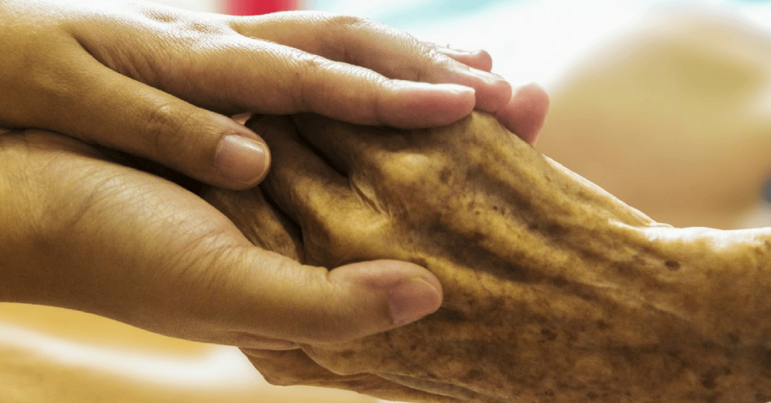Caregiving for a family member or loved one can be life-changing, in both positive and negative ways. Nearly 40 million Americans provide unpaid care for an adult, and 17.7 million of these caregivers are helping an adult age 65 or over with a significant physical or cognitive impairment. Caregiving involves significant time and emotional work, yet much of this work is invisible. Rarely are caregivers provided emotional or financial support for their help, or invited to vent their frustrations and share their stories.
The Soul of Care
In his recently published book, The Soul of Care, Harvard professor of psychiatry and medical anthropology Dr. Arthur Kleinman describes his heartbreaking and transformational experience caring for his wife, Joan, who was diagnosed with early-onset Alzheimer’s in her late 50s. Arthur was Joan’s primary caregiver for the ten years of her illness, through the loss of her sight and increasing confusion and agitation, even enduring violent outbreaks in which Joan could not recognize her husband.
Despite the many dark times during this period, caring for Joan changed Arthur’s life in some positive ways as well. Once perpetually stressed-out and focused on work, Arthur had to undertake a massive shift in his daily routine and mentality, which was ultimately healing. Guiding Joan through life forced Arthur to slow down and reorient his life toward what really mattered–nurturing relationships with family and friends, and enjoying the simple pleasures in everyday life. “I needed to see and feel what was around us as Joan would, so I could explain and describe things that became harder for her to sense and experience,” Arthur writes.
Throughout their decades-long relationship, Joan had been the primary caregiver in their household– for Arthur, their children, even supporting friends and colleagues. Now, Arthur was determined to do the same for Joan. However, they encountered barriers from the health care system at every turn. While their primary care doctors were enormously supportive, asking about the family’s mental and social well-being and offering solutions, very few of the other doctors treating Joan’s illness seemed aware of, let alone offered help for, any of the caregiving challenges Joan and Arthur were facing. “They saw only the disease process, not the experience of the illness,” Arthur writes.
A Caregiving Paradox
Arthur’s experience as both a doctor and caregiver provides insight into what the health care system is missing when it comes to care. Doctors most often pursue a career in medicine because they want to help people and care for them when they need help. However, the practice of medicine and medical institutions have moved further and further from caregiving over the years.
“Neither sufficient time nor money nor attention is devoted to caregiving by medical institutions” writes Arthur. “The work of the doctor has moved away from hands-on practice to high-technology diagnosis and treatment.” Additionally, medicine too often disregards those who do much of the hands-on caregiving such as nurses, allied health professionals, and family members. The professed importance of providing quality care juxtaposed with the reality of hurried, impersonal treatment is what Arthur refers to as one of the paradoxes of caregiving and medicine.
The experiences of other caregivers confirms Arthur’s paradox. According to a 2015 AARP survey, only one third of caregivers say a health care provider, such as a doctor, nurse, or social worker, has asked about what was needed to care for their recipient. And only 16% of caregivers say a health care provider has asked what they need to take care of themselves.
Helping to navigate care
As Arthur also mentions in his book, new initiatives are starting to give caregivers more support. One of these promising initiatives is “Care Ecosystem,” a program in which a trained “Care Team Navigator” provides education, support and care coordination for people caring for patients with dementia. After one year of participation in the care ecosystem, results showed improved patient quality of life by 50%, decreased caregiver depression and burden by more than 100%, and reduced emergency department visits by 14%, compared to patients who received access to different resources. The success of this program demonstrates the difference that empathetic listening and expert medical advice can make for caregivers of patients with dementia.
Yet, telemedicine services for caregivers may be just a band-aid, given the enormous challenges these families face. One-fifth of caregivers report that caregiving is physically stressful, 38% of caregivers experience emotional stress, and 18% report financial strain. Given that there will soon be an even higher demand for care for older adults, there need to be more systemic reforms to ensure that patients and caregivers both receive the support they need.
The National Academy of Medicine offered recommendations in a 2016 report for policy and institutional changes to support patients and caregivers. Our health care system needs to acknowledge and inquire about caregiver needs, just as they ask about patients’ health conditions, and caregivers must be included in care planning for patients. Medical professionals should to be able to refer caregivers to supportive services if needed. At the same time, government agencies must provide increased funding for services such as the National Family Caregiver Support Program, expand family leave policies, and develop and implement more evidence-based caregiver intervention programs.
At the end of The Soul of Care, Arthur Kleinman offers a warning– while caring for others is humane and natural, we cannot take it for granted. “Care can atrophy and weaken when it is inadequately nourished,” he writes. As our society has become increasingly focused on individualization, we forget that sometimes the best way to care for ourselves is to care for others.
